#Leedcertificationindubai
Text
Advantages of earning a LEED certification
Agile Advisors provides LEED Certification in Dubai, the construction industry has a significant environmental impact due to its high use of electrical energy, water, and raw materials; it also produces a substantial amount of residue and toxins in the air, soil, and water. Consequently, this industry has a lot of room for environmental advancement. Various public and commercial entities globally have incorporated sustainable construction standards in the development of building projects to promote environmental and human health conservation. The original goal of this certification was to create a standard that would identify sustainable buildings based on three primary aspects—environmental, social, and economic. Similar regulations apply to public buildings in some states and towns, and incentives may be available for private sector projects that obtain LEED certification. We continue to make changes and revisions even after plans are finished to satisfy engineering objectives, owner requests, and city plan check requirements.
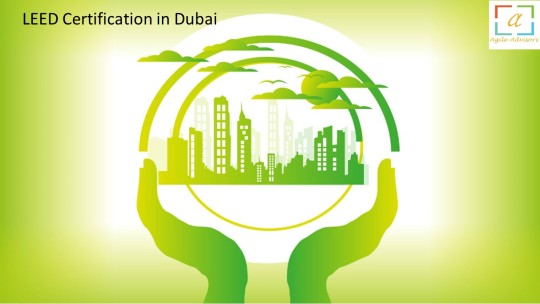
Agile Advisors, a leading LEED Certification in UAE, it is critical to verify local and state construction rules, laws, and regulations for the most correct and up-to-date information, as these policies evolve and vary widely by jurisdiction. Remember that the precise advantages will change based on the unique conditions of every project and its stakeholders. Nevertheless, many projects and building types can benefit significantly from LEED certification. There are several places to find false information regarding the advantages and procedures of earning a LEED certification. While some may think the process is overly costly or time-consuming, it is frequently evident that the investment can yield sizable returns over the building's lifetime when the longer-term advantages are considered. We provide the most energy-efficient solutions in our designs while adhering to energy code regulations. Both projects and people can move quickly.
In our opinion as LEED certification companies, the method also allows for innovation in design and construction, which can result in even more significant benefits in some circumstances. In summary, LEED certification is about building healthier, more productive spaces for people to live, work, and play while being aware of our environmental impact. The demanding, multi-step LEED certification process verifies a building project's sustainability and environmental performance. This article discusses five essential aspects of sustainable design and how a Mechanical, Electrical, and Plumbing (MEP) engineering designer may help you achieve your objectives for sustainable building—the official website for managing and registering LEED projects. A comprehensive list of all the credits available under different rating schemes. USGBC created the LEED rating system. We have designed by LEED criteria for numerous clients' LEED projects.
We are LEED certification companies in Agile Advisors, the website offers in-depth information about grading systems, the advantages of being LEED-certified, the certification process, and much more. The Green Business Council of India (GBCI) is in charge of independently identifying excellence in the performance and practices of the green business sector worldwide, including managing the LEED certification procedure. Starting the process of becoming LEED certified might be intimidating, but with the correct tools and assistance, it can be a pleasant and manageable process. We at Pro Engineering share your commitment to a more environmentally friendly and sustainable future, as shown by your dedication to sustainability. We are only a phone call away if you need to decide if LEED certification is appropriate for your upcoming project. You can get assistance from our MEP engineering design experts in preparing the necessary building documentation for state or local permits.
0 notes
Text
Improving Sustainable Plans for Development
A LEED (Leadership in Energy and Environmental Design) consultant is a specialist who guides and advises customers on the LEED certification process for their building projects. These experts are well-versed in sustainable construction strategies, energy efficiency, and environmental design concepts. As a LEED Consultancy in UAE, we know they are critical in simplifying the certification process by giving professional advice on sustainable tactics, materials, and technology that may assist in minimizing a building's environmental effect while improving its overall efficiency and performance.
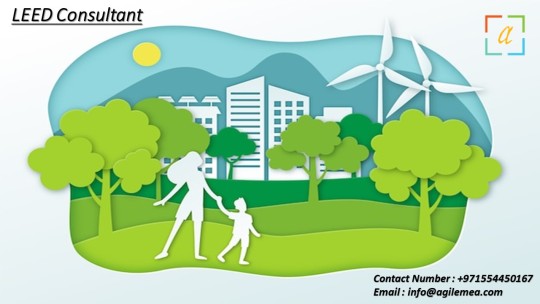
In our opinion as a LEED Consultant in UAE, I also know that as sustainability and environmental consciousness have grown in importance in the building business, the function of a LEED consultant has expanded to include a wide range of tasks. These specialists play an important role in conducting complete energy audits, devising sustainability strategies, and suggesting environmentally friendly building materials and technology. Their knowledge includes assessing the environmental effects of construction projects, finding potential for increased energy efficiency, and implementing measures to reduce waste and save resources throughout the lifespan of the building.
A LEED consultant understands the complexities of the LEED certification process, including the numerous rating systems and qualifications required for certification at various levels, such as Certified, Silver, Gold, or Platinum. As an expert LEED Consultancy in UAE, we know they give vital insight into the documentation requirements and aid in the development of the required documents, ensuring that all criteria for successful certification are satisfied. Furthermore, they act as liaisons between project teams and certification bodies, providing effective communication and coordination to guarantee LEED compliance.
LEED consultants have excellent analytical and problem-solving abilities in addition to technical experience, allowing them to analyze complicated building projects and provide new solutions that balance environmental sustainability with practical viability. They stay up to date on the most recent advances in sustainable construction methods and keep customers informed about emerging trends and technology that might improve the eco-friendliness and efficiency of their projects. In our understanding as LEED Consultancy in Dubai, we know they assist clients in navigating the ever-changing environment of green building standards and regulations by staying up to current on industry best practices and regulatory requirements.
Beyond the certification process, LEED consultants frequently give customers continuing assistance and guidance, recommending operational changes and maintenance practices that encourage long-term sustainability and energy reduction. We believe as LEED Certification in Dubai, they may undertake post-occupancy studies to analyze the performance of certified buildings, identifying possible areas for improvement and making suggestions for sustained environmental stewardship. Their comprehensive approach to sustainable design and construction not only helps the production of healthier and more ecologically responsible buildings but also creates a sustainability culture across the construction sector as a whole.
#LEEDConsultancy #LEEDConsultant #LEEDCertificationinDubai #LEEDcertificationinUAE #LEEDConsultancyinDubai #LEEDConsultancyinUAE
#LEEDConsultancy#LEEDConsultant#LEEDConsultancyinUAE#LEEDConsultancyinDubai#LEEDCertificationinDubai#LEEDcertificationinUAE
0 notes
Text

In our opinion as LEED Certification in Dubai, I know Dubai is home to several significant LEED-certified projects that demonstrate the city's dedication to sustainable development.
#LEEDConsultancy #LEEDConsultant #LEEDCertificationinDubai #LEEDcertificationinUAE #LEEDConsultancyinDubai #LEEDConsultancyinUAE
0 notes
Text
The Value and Advantages of Earning a LEED Certification
We are a LEED Consultant in Agile Advisors; many architects are wary of LEED frequently because they are misinformed about its advantages and methodology. In addition to demonstrating your dedication to sustainability on a global scale, the certification lowers your long-term operating costs by promoting energy efficiency. It enhances the health and well-being of residents and is frequently necessary for some government-run enterprises. Building owners and experts in commercial real estate benefit greatly from the fact that LEED-certified buildings frequently fetch higher leasing rates. LEED certification is a globally acknowledged indicator of leadership and success in sustainability. LEED is globally recognized and utilized in more than 160 nations. It communicates to tenants, investors, and the general public that the building is resource-efficient, ecologically conscious, and a healthy place to live and work.
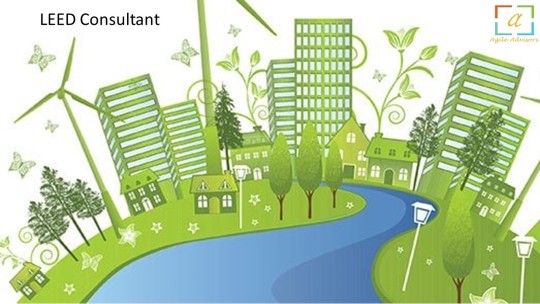
As a LEED Consultancy in Agile Advisors, Buildings with LEED certification are intended to have higher asset values and lower running expenses. This is because their lifetime utility expenses are lower than those of non-certified buildings due to their higher energy and water efficiency levels. For instance, they might use less water because of low-flow plumbing fixtures or less electricity because of energy-efficient appliances and lighting. Buildings with LEED certification are designed with less of an environmental impact in mind. Among other sustainable practices, they use less energy and water, produce less waste during building and operation, and frequently employ renewable energy sources. This helps keep greenhouse gas emissions down and preserve natural resources. Buildings developed and maintained with consideration for LEED requirements have the potential to enhance the well-being and efficiency of their inhabitants.
Being a LEED Certification in Dubai, improved indoor air quality, more natural light, and the use of non-toxic materials can all help achieve this. A better indoor environment can also reduce healthcare expenses, increase worker satisfaction and productivity, and decrease absenteeism. Potential tenants frequently find LEED-certified buildings more appealing since they are healthier and more energy-efficient, making them better places to live and work. This may enable the building owners to raise the rent they charge, especially in the market for commercial real estate. These buildings also frequently have more excellent occupancy rates, which helps property owners make more money. Workers in buildings with LEED certification typically have lower absenteeism rates and are more productive. This is probably because indoor environments are healthier and have better lighting and climate control.
In our role as a LEED Certification in UAE, LEED certification can improve a building's or company's reputation by showing a dedication to social responsibility and environmental sustainability. This may draw in clients or consumers who regard these principles highly. By implementing sustainable measures, LEED-certified buildings can reduce possible hazards related to resource scarcity, energy costs, or upcoming environmental legislation. Green building practices are often promoted or required by numerous federal, state, and local governments across the globe; in some instances, LEED certification is required for public projects and their structures. Some offer financial rewards to private sector enterprises that obtain LEED certification. For example, a project that satisfies specific LEED requirements may provide tax benefits or faster permitting.
0 notes
Text
The Advantages of Green Building Certification with LEED
Agile Advisors provide LEED Consultancy in UAE; the building sector is significantly shifting in a world where sustainability and environmental consciousness are paramount. Green buildings are emerging as the new norm in contemporary architecture, focusing on minimizing their adverse ecological effects throughout design and construction. The U.S. Green Building Council (USGBC) created the internationally acclaimed LEED (Leadership in Energy and Environmental Design) certification, which is at the vanguard of this movement. This article examines the many benefits that green buildings can receive from LEED certification and explains why it has come to represent superiority in sustainable building practices. Let's first review the LEED certification requirements before exploring the advantages. A comprehensive framework known as LEED assesses a building's sustainability and environmental performance in several design, construction, operation, and maintenance areas.
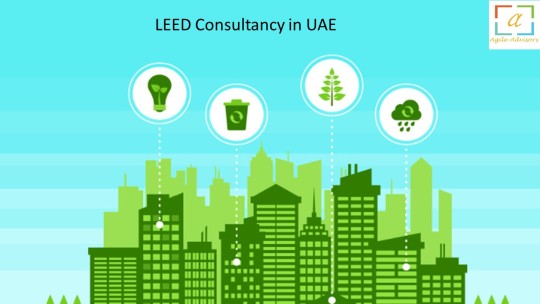
Agile Advisors, a leading LEED Consultancy in Dubai, uses a point system where projects earn credit for adopting sustainable practices and meeting predetermined requirements. These credits are then tallied to determine the certification level—Certified, Silver, Gold, or the highly sought-after Platinum. A project's LEED rating increases with the number of credits it earns. This increase is a result of combining environmentally friendly building practices with energy-saving solutions. LEED promotes the use of enhanced insulating materials, renewable energy sources, and efficient HVAC systems to reduce energy usage and the building's carbon footprint. The use of sustainable goods and practices in LEED projects not only significantly contributes to emissions reduction but also has tangible health benefits. The use of low-emission materials, paints, and adhesives further enhances indoor air quality and reduces hazardous off-gassing, ensuring a healthier indoor environment for occupants.
We are LEED Certification in UAE, and using low-emission materials, paints, and adhesives further enhances indoor air quality and reduces hazardous off-gassing, ensuring a healthier indoor environment for occupants. One of the most evident advantages of green buildings with LEED certification is the substantial reduction of greenhouse gas emissions. Due to the worldwide concern over water scarcity, the preservation of water resources should be a primary priority. LEED certification addresses this problem by encouraging water-efficient landscaping and fixtures. Low-flow faucets, dual-flush toilets, and effective watering systems are examples of integrated technologies used in LEED buildings that save water usage without sacrificing functionality. Rainwater collection and greywater recycling systems are also included in specific LEED projects. By collecting and treating rainwater, these advances successfully reduce demand for municipal water supplies and utility expenditures for non-potable purposes like irrigation and toilet flushing.
As a LEED Certification in Dubai, we understand the importance of green areas for local ecosystem support as well as aesthetic reasons. Green walls and roofing, common in LEED-certified buildings, offer several advantages. In addition to absorbing rainfall and mitigating the effects of urban heat islands, these planted surfaces serve as insect and bird habitats. Another distinguishing feature of LEED-certified green building project is native plant landscaping. Native plants not only help local wildlife and conserve water, but they also lessen the need for fertilizer and pesticides. Encouraging biodiversity through gardening enhances the general well-being of the surrounding area around the structure. LEED-certified green buildings, with their environmentally beneficial elements, not only serve as role models for environmental responsibility but also actively promote a more sustainable future. By choosing LEED certification, you are not just building a structure, but also contributing to a positive change in our environment.
0 notes
Text
The Advantages of LEED Platinum Standard Building Design
Agile Advisors, a leading LEED Certification in UAE, The Leadership in Energy and Environmental Design (LEED) certification system has evolved into a crucial framework for designing and constructing buildings that are not just environmentally friendly, but also economically and socially advantageous in an era where environmental sustainability is a pressing issue. The benefits of achieving LEED Platinum certification, the highest level among the LEED certification levels, extend beyond financial savings and energy efficiency. They encompass a significant improvement in human health, a factor that should deeply concern us all. Creating a building that meets LEED Platinum requirements necessitates a comprehensive approach to energy efficiency, including optimizing insulation and building materials, and implementing cutting-edge lighting, HVAC, and heating technology. These buildings contribute to a smaller carbon footprint, which lessens the impact of climate change by consuming much less energy.
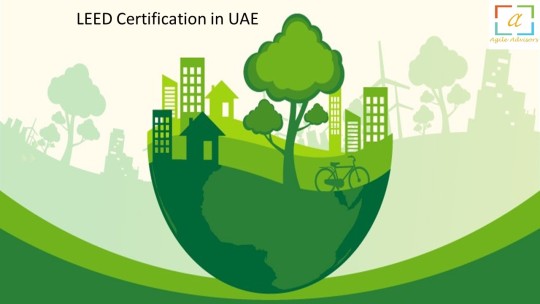
Agile Advisors provide LEED Certification in Dubai, LEED Platinum buildings frequently use renewable energy sources like solar panels to reduce their dependency on non-renewable resources. The well-being of building inhabitants is prioritized in LEED Platinum buildings through improving indoor air quality, natural lighting, and thermal comfort. This emphasis on establishing a healthy indoor environment lowers the prevalence of health problems linked to poor air quality and inadequate lighting while increasing occupant pleasure and productivity. The emphasis on water conservation and efficiency that comes with developing buildings to LEED Platinum standards is another important advantage. These buildings reduce water usage and support overall water conservation efforts by utilizing cutting-edge wastewater technologies, effective irrigation systems, and sophisticated plumbing fixtures. While it's true that LEED Platinum buildings may require a higher initial investment than traditional buildings, the long-term financial benefits are significant.
We are LEED certification companies in Agile Advisors, Over the building's lifespan, substantial operational savings are realized through lower energy and water bills, reduced maintenance costs, and potential tax benefits and rebates. This financial motivation is a key driver for developers and owners to pursue LEED certification, as these structures often command higher property values and rental rates. Designing in accordance with LEED Platinum criteria is not just a design choice, but a powerful statement of corporate responsibility for companies and organizations. It signifies a commitment to environmental protection, sustainability, and the well-being of the community and workforce. This commitment can enhance a company's reputation, attract environmentally conscious renters or customers, and align the values of investors and stakeholders with such leadership.
Being LEED certification companies, the attainment of LEED Platinum certification can yield regulatory benefits by guaranteeing adherence to ever-stricter environmental laws. Furthermore, a LEED Platinum certification can be a differentiator in a market where sustainability is essential to many consumers and organizations, drawing in eco-aware customers, tenants, and investors. Beyond environmental responsibility, designing a building to receive LEED Platinum certification offers several advantages, ranging from increased occupant health and well-being to energy and cost savings. The importance of developing buildings to LEED Platinum standards will only increase as environmental consciousness and sustainable development gain global traction, making it an essential factor to consider for the construction industry's future.
0 notes
Text
The Advantages of USGBC LEED Green Certification
Agile Advisors provides LEED Consultancy in Dubai; green construction is becoming more and more common and essential for healthier environments. Find out the advantages of pursuing a career in LEED green certification. Building sustainable and energy-efficient buildings in a growing environmental consciousness worldwide is more crucial than ever. The U.S. Green Building Council (USGBC) and other groups spearhead the movement, revolutionizing how we plan, build, and maintain our communities and structures. Professionals from various industries are joining this movement and seeing the benefits of being a LEED Green Associate for the environment, financial security, and professional development. The pay advantages of earning a USGBC LEED Green Associate certification will be covered in detail in this article. Let's first review the definition of a LEED Green Associate before we examine the advantages.

In Agile Advisors, we are LEED Consultancy in UAE; this credential is the first step for professionals who wish to demonstrate their green building competence in non-technical practice fields. It indicates an understanding of the most recent green building concepts and methods. The certification honors people with a current, verified knowledge of the essential concepts and practices in green building. Several reports and studies from the industry indicate that earning a LEED Green Associate certification might raise one's compensation considerably. While precise figures may differ depending on area, sector, and personal experience, LEED professionals can often anticipate a pay raise of between 10% and 30% when compared to their counterparts who are not certified. This increase results from the rising demand for LEED-certified experts and the higher price businesses are prepared to pay for their knowledge.
As a LEED Certification in Dubai, the LEED Green Associate certification opens up a world of new work prospects beyond just a pay raise. Businesses involved in construction, design, engineering, and the environment increasingly seek LEED-certified experts to oversee their sustainability initiatives. This increased demand can result in increased employment offers and career promotions, frequently with more excellent wages. Professionals with the LEED Green Associate certification have an advantage over others in the employment market. It shows a dedication to current industry knowledge, professional growth, and best practices for sustainability. Candidates with these qualifications are frequently given preference by hiring managers in the sustainable construction industry because they offer a unique skill set that can assist businesses in achieving their green building objectives.
As a LEED Certification in UAE, we believe that LEED Green Associate certification validates your thorough understanding of LEED rating systems, green building techniques, and principles, enhancing your professional credibility. Employers are more willing to invest in staff members who demonstrate a commitment to their field and its future, and this can be a powerful motivator in discussions for promotions or pay increases. The green construction industry is expected to grow significantly in the upcoming years. As governments worldwide impose stricter environmental standards, there will be a growing need for LEED-certified experts. Investing in a LEED Green Associate certification will position you for future employment security and increased earnings prospects. Being a LEED Green Associate offers more than just professional benefits. It's a pathway to personal growth and a commitment to a more sustainable future.
0 notes
Text
The LEED Certification Case Study
Agile Advisors, a leading LEED Certification in Dubai, Benefits that increase building performance or reduce operating expenses for building users are known as performance-based benefits. Marketing benefits arise from how customers react to green certification. The relative value of the marketing-based advantages that Leadership in Energy and Environmental Design (LEED) buildings receive as a result of green signaling mechanisms is demonstrated in this study. Notably, the benefits associated with the certification process are highlighted. Naturally, everyone involved in the LEED certification program wants to get exposure. However, there is a noticeable interest in green signaling, even among LEED members. The green signaling mechanism shifts building patterns from just below to slightly above the threshold level at the certification thresholds, encouraging builders to cluster structures just above each threshold.
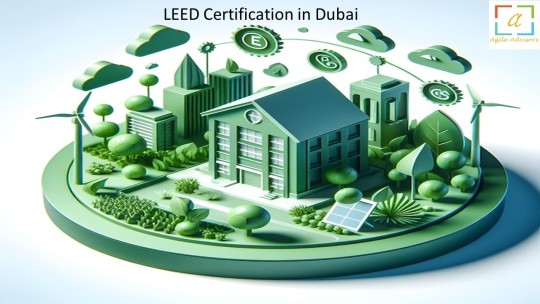
Agile Advisors provide LEED Certification in UAE, the findings hold for all subsamples, while non-profits construct greener structures and use greener signaling than for-profit businesses. Nonparametric regression discontinuity is used to observe signals between various building kinds. Organizations are incentivized to build "greener" buildings by renovating existing structures to meet LEED certification requirements, owing to the marketing benefits associated with certification. Such facilities are not included in the design of traditional buildings, which renders them unsustainable and puts human life in danger by emitting greenhouse gases and harmful waste. Due to the simple availability of labor and materials at the local level, constructing with conventional design concepts—also known as the vernacular design—is a frequent practice.
We are an LEED Consultant in Agile Advisors, this has prompted researchers to investigate green and sustainable building design to create livable, healthy environments. The Green Building Concept and Building Rating System were first introduced by the Leadership in Energy and Environment Design (LEED) movement, primarily in the United States. The evaluation method offers building owners and operators a framework for recognizing, quantifying, and applying the idea of green building design, construction, maintenance, and operation way outs. The certification system divided buildings into gold, silver, and platinum categories according to how well they adopted green building principles. The certification system divided buildings into gold, silver, and platinum categories according to how well they adopted green building principles.
As an LEED Consultancy in Agile Advisors, Buildings with LEED certification can reduce greenhouse gas emissions by 34%, energy consumption by 25%, and water usage by 11%. The United States Green Building Council (USGBC) claims that green buildings use 19% less energy and have 27% higher tenant satisfaction levels. LEED is a voluntary, self-regulatory program that might start a race by encouraging businesses to invest more and more in energy efficiency and other technologies that enhance environmental performance. Involvement in LEED conveys to stakeholders the attributes of management and construction. The LEED certification standards provide flexibility regarding the kinds of expenditures that businesses make, the degree of certification they obtain, and whether or not they choose to go above and beyond the minimal requirements to receive certification.
0 notes
Text
Advantages of Green Building Certification with LEED
As an LEED Certification in UAE, the attainment of LEED certification is contingent upon executing strategies that promote energy efficiency, occupant well-being, and resource conservation. Buildings with LEED certification use systems and design choices that lower energy use, enhance indoor air quality and safeguard natural ecosystems. These can include external aspects like native landscaping and green roofs that manage runoff. Better indoor air quality for residents is achieved by carefully choosing materials and finishes, such as low-VOC (volatile organic compound) paint, which lowers allergies and other indoor pollutants. Buildings can use renewable energy sources to get LEED certification points, including solar photovoltaics and geothermal HVAC systems. Design and construction must adhere to LEED rating system requirements to receive LEED certification. Achieving LEED certification has both qualitative and quantitative advantages.

We are an LEED Certification in Dubai, Reduced running expenses and increased energy efficiency can result in significant long-term returns, even when the upfront investments are not typical of traditional construction. Throughout a building's lifespan, the initial investments might be offset by considerable profits thanks to state and federal subsidies. Furthermore, they foster goodwill because of the advantages LEED-certified buildings offer to the environment and their communities. Even though it might not always be measurable, this might serve as a differentiator when promoting to investors and customers. Almost any kind of project can obtain LEED Certification because there are multiple certification levels and categories. There are LEED rating systems for cities, neighborhoods, residences, interior design, building operations, new construction, and substantial renovations.
In our opinion as LEED Consultant, Buildings with LEED certification can have highly effective envelopes with advanced glazing technologies. The amount of energy required for heating and cooling is reduced using these features. Your building will be 30–60% more energy efficient when you include additional energy-saving elements like LED lighting and Energy Star appliances. Over time, this can save a significant amount of money on operations. Tight building envelopes and cutting-edge filtering systems that raise interior air quality are prerequisites for LEED certification. LEED-compliant buildings have lower levels of mound, mildew, and airborne contaminants. A building's or even a neighborhood’s dedication to sustainable operations and design is demonstrated by a LEED certification. Every LEED certification level honor high-performance structure that exceeds conventional construction requirements.
We are renowned LEED Consultancy, LEED offers a foundation for creating green buildings that are healthful, highly efficient, and economical, and it is available for almost all sorts of building, community, and residential project types. A worldwide recognized indicator of success in sustainability is LEED certification. The pursuit of LEED accreditation offers numerous advantages, and Dickinson's dedication to sustainability has made us a leader in sustainable residential developments and higher education institutions. Energy Star appliances, low-flow plumbing fixtures, and stormwater management elements like rain gardens contribute to decreased water usage. Every LEED Certified project includes elements for recycling and waste reduction. Over 80 million tons of garbage have been kept out of landfills by LEED-certified buildings.
0 notes
Text
How does the LEED rating system operate?
As an LEED Certification in UAE, Buildings can gain points for fulfilling requirements in interior environmental quality, water conservation, and energy efficiency. A building's LEED rating increases with the number of points it receives. Green Business Certification Inc. conducts a thorough evaluation procedure for buildings to certify them as LEED-certified. This process consists of three reviews: pre-certification, construction, and post-construction. The building also needs to score specific points and fulfill a set of minimal conditions in each category. The LEED rating system strongly emphasizes renewable energy and energy efficiency. When a building uses energy-efficient devices and systems, such as solar panels, LED lighting, high-efficiency HVAC systems, and data analytics platforms, it might receive points. Using renewable energy sources, such as hydroelectric, wind, or geothermal electricity, can also earn points. When a project achieves over 50% of the possible points and attains the silver certification level, it exceeds the fundamental LEED requirements.

Being an LEED Certification in Dubai, another crucial component of the LEED grading system is water conservation. Buildings that use greywater and rainwater harvesting systems and water-efficient fixtures and appliances like low-flow toilets and showerheads can accrue points. An additional essential component of the LEED certification system is indoor environmental quality. It can gain points when a building offers the best possible natural light, thermal comfort, and indoor air quality. Incorporating environmentally friendly cleaning and pest control techniques and granting access to green areas are other ways they can earn points. Building owners and developers find LEED certification crucial as more businesses strive to satisfy the growing demand for green buildings and lessen their environmental effects. Getting LEED certified can also help a building become more valuable, marketable, and appealing to high-caliber investors.
In our opinion as LEED Consultancy in Dubai, there are four levels in the LEED certification process, each of which denotes a higher level of environmental responsibility and sustainability. These designations, which stand for increasing performance in green building techniques, are Certified Silver, Gold, and Platinum. Achieving Certified status indicates that a building project has met the LEED certification's baseline requirements, earning at least 40% of the total potential points. This level exhibits a fundamental dedication to sustainability, covering essential techniques in material selection, water saving, and energy efficiency. It acknowledges the project's preliminary efforts to reduce its environmental impact. This level incorporates advanced sustainable practices above and above the core benchmarks, demonstrating a considerable commitment to environmental stewardship.
We are renowned LEED Consultancy in UAE, Projects of this category frequently incorporate improved energy management systems, water efficiency measures, and sustainable building materials, all of which contribute to a lower carbon footprint and better indoor environmental quality. Securing over 60% of the LEED points, a building with gold certification has demonstrated excellence in sustainable design and operation. Among other environmental accomplishments, gold-certified buildings stand out for their creative water and energy conservation approaches and improved indoor air quality. These structures are excellent examples of sustainable architecture, demonstrating how careful planning and execution can significantly reduce their adverse environmental effects.
0 notes
Text
How to Accumulate LEED Certification Points and Credits
We as an LEED Consultancy, the objective of LEED is to take into account essential components that combine to make better buildings that have a positive impact on the following "impact categories" in the world: water resources, human health, biodiversity and ecosystems, climate change, recyclable and sustainable materials, the green economy, and the community. Each green building component of a site receives points based on how it contributes to these larger LEED objectives. Nonetheless, some elements are given more weight than others regarding grading. For instance, components of green buildings that affect climate change are weighted higher than components that affect water resources. The LEED certifiers who inspect the house will assign points on the scorecard according to the particular certification path that has been chosen; the total impact of each scoring item determines how much weight each item has. The overall scores determine the LEED certification levels.
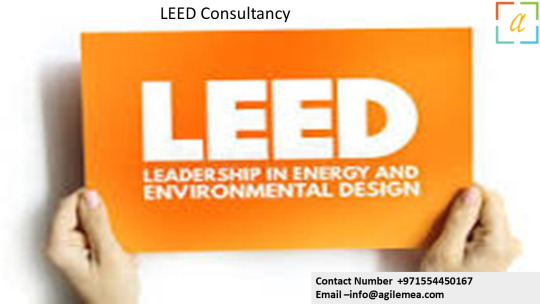
In our opinion as LEED Consultant, establish a solid overall budget and the LEED certification level you want to achieve before starting the design phase of your project. Add an optional higher certification aim or "stretch" goal to encourage inventiveness. Budgeting for higher LEED certification levels, like Platinum, is necessary because they come with additional costs. Achieving your LEED target within budget should be the project team's priority during the design and construction phases. Keep your project's economic and environmental integrity intact at all times. Consider how green initiatives will impact costs during the building's lifetime as you value-engineer your project. Consider a feature's relationship to other features before deciding to remove it to see whether maintaining it will help you achieve cost-saving synergies and LEED credits. These advantages positively impact climate change, human health, biodiversity, water resources, material resources, the green economy, and community development.
We are renowned LEED Certification in Dubai, Numerous energy-saving features pay for themselves instantly or in a few months of operation, allowing for downsizing, removing, removing additional equipment, or lowering total capital expenditures. Instead of starting with "first cost" value engineering, set your targets for "life cycle" value engineering. Numerous architects, consultants, engineers, product marketers, environmentalists, and other specialists in the construction business across the nation possess proven expertise in green building and the LEED rating system and procedure, making them capable of helping you achieve your LEED objective. These experts can make cost-effective suggestions for obtaining LEED points, show you how to balance out certain costs with savings from other areas and help you find areas where your project can work together. Because of a higher population density and a smaller land area, some homeowners may find it difficult or impossible to meet the above standards. However, there are other approaches to raising an area's sustainable quality.
In our role as LEED Certification in UAE, Different sustainable construction components are given points under the LEED point system, determining whether a building is certified at the silver, gold, or platinum level. Regardless of the level attained, achieving LEED certification is an outstanding achievement. On the other hand, homes that receive Platinum or Gold LEED certification are considered the epitome of green building. These LEED certification levels call for creative design thinking and a sincere love of the environment. Respected for their energy efficiency, accessibility to public transportation, minimal water waste, clean indoor air quality, use of recyclable or healthy materials, and efforts to maintain a sustainable construction site throughout the building process, LEED properties—especially those with Gold and Platinum scores—are highly regarded.
0 notes
Text
How much time does it take to become certified LEED?
As an expert LEED Certification in Dubai, Colleges can work with neighborhood companies, governmental bodies, and civic associations to further sustainability objectives and assist LEED certification initiatives. Colleges can expedite the certification process and increase their influence outside campus by utilizing outside resources and expertise. Setting sustainability targets and incorporating green building practices into a project's planning and design stage are the first steps in being certified LEED. This entails choosing a design team with LEED accreditation and establishing performance goals for indoor environmental quality, water conservation, and energy efficiency. Colleges must gather paperwork and supporting materials to show that a project complies with LEED standards after it has begun. Projects are encouraged to explore "beyond the box" and develop original ideas that result in greener projects under this category.
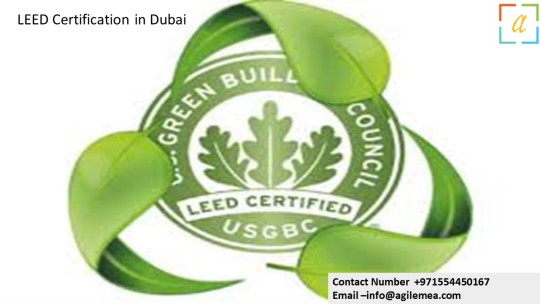
Being an LEED Certification in UAE, this entails monitoring water and energy consumption, recording eco-friendly building materials and techniques, and performing tests to confirm the structure's functionality. However, the savings realized over time due to the lower-than-industry-standard operating costs typical of a LEED-certified building can substantially offset these higher starting costs. Improved market valuation, quicker lease-up rates, and rental premiums can all help you recoup additional initial costs. A technique for determining the overall cost of ownership is life cycle costing, which accounts for all expenses related to purchasing, owning, and maintaining a building and its final disposal. Building owners, engineers, and constructors are becoming increasingly aware of the advantages of sustainable methods in preserving the environment and enhancing the effectiveness and caliber of newly constructed buildings.
In our opinion as LEED Consultant, your company's dedication to sustainability and addressing climate change is demonstrated by the space you rent in a green building. In addition to the positive exposure it will bring, your decision will make a difference. Green buildings save water and energy, as we have already covered, but they also emit less CO2 and are responsible for keeping millions of tons of waste out of landfills. The main objectives are reducing carbon emissions and promoting "walkability" to services—which spare residents from hopping in their automobiles and heading off-site. According to a recent IBM and National Retail Federation poll, approximately 70% of respondents in North America and almost 80% of consumers worldwide stated that a brand's eco-friendliness and sustainability are essential attributes.
We as an LEED Consultancy, this category focuses on lowering the waste generated during building, safeguarding and rehabilitating natural habitats, lowering light pollution, managing rainfall, and lowering the heat island effect. The goal of this category is to use less water on-site and within the building. This category focuses on cutting hazardous refrigerants that deplete our ozone layer and contribute to global warming to optimize building efficiency and reduce energy use. Recycling is required in this category, and sustainable and renewable resources (ideally from local providers) are encouraged. This category focuses on enhancing the building's interior air quality, making the most of daylighting and lighting controls, expanding the building's views, and enhancing the acoustics, all of which contribute to happier and more productive tenants.
0 notes
Text
How is LEED Certification obtained for a project?
We are an LEED Certification in Dubai; the internationally recognized LEED (Leadership in Energy and Environmental Design) certification is a testament to sustainability. It is the most popular green building grading system and may be applied to any building project, including interior fit-outs and new construction. LEED offers guidelines for designing affordable, healthy, and practical buildings. LEED is divided into four levels: Certified, Silver, Gold, and Platinum. Before pursuing LEED certification, a project must show that it complies with all requirements. They must accrue several points based on sections that address sustainability issues to reach a specific LEED level. The date of project registration is the basis for calculating rates. A one-time, fixed-rate registration charge is required.
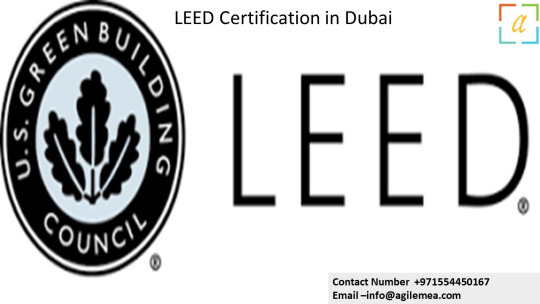
As an LEED Certification in UAE, the size and rating system of your project determines the certification fees. The number of answers to this question equals the number of LEED buildings. Officially, both the environment and the residents of LEED buildings are healthier. They are meant to improve the lives and experiences of people who enter and are made to be economical and resource-efficient structures. A fantastic marketing tool, unofficially, is LEED accreditation. Any degree of LEED certification on a building demonstrates ownership interest. It indicates that the building is modern, if not completely renovated, to function well and lower tenant utility expenses. LEED certification is difficult to obtain; therefore, possessing it demonstrates that thought, attention, and resources were invested in the building and its impact on the environment and its residents.
In our role as LEED Certification in Dubai, that appeals to prospective purchasers or tenants. There is, in theory, no drawback to LEED. No matter what, developing a well-designed, sustainable, and efficient building is a good thing. One critique of LEED is that it focuses on the intended usage and design of a building rather than its actual use. But are buildings genuinely being used as designed once constructed and occupied? After they are occupied, LEED buildings frequently perform far less efficiently than intended. The USGBC's esteemed and internationally renowned LEED grading system declares to the world, "This building is environmentally responsible to the internal (people in the building) and external environment (the planet)." The U.S. Green Building Council, or USGBC, is the foremost organization for green building certification.
We are renowned LEED Certification in UAE, LEED, which stands for Leadership in Energy & Environmental Design, is a framework for planning, constructing, and maintaining a house, neighborhood, or other structure. The "triple bottom line," or three key concepts central to LEED, are financial, environmental, and social advantages (or, to put it another way, people, profit, and planet). A LEED-certified building needs to fulfil a minimum of requirements, also known as "prerequisites," as well as a variety of optional points, sometimes known as "credits," which consider the project's intended environmental initiatives and advantages. This category encourages and considers constructing locations that safeguard sensitive land and provide additional possibilities for alternate forms of transportation.
0 notes
Text
LEED DEVELOPMENTS' VALUABLE BENEFITS AND SUSTAINABILITY
As an LEED Consultancy in Dubai, LEED, or Leadership in Energy and Environmental Design, is the premier program for environmentally friendly structures and neighborhoods. An acknowledged pioneer in environmentally friendly building and design, LEED offers numerous advantages and has replaced other industry standards. With an estimated 20% of all new construction being LEED certified—a percentage increasing annually—green building and renovation are becoming a valuable asset in real estate, mainly when an institution owns or builds the development. So, where is the source of the value? The goal of sustainability is to improve the environment on a global scale, and LEED has been instrumental in promoting sustainable building and design. Buildings with LEED certification is more energy-efficient, have better indoor environmental quality, and produce less greenhouse gas emissions. By using 25% less energy and 11% less water, these developments also prioritize water conservation and energy efficiency, ultimately extending building lifespans and improving the environment.
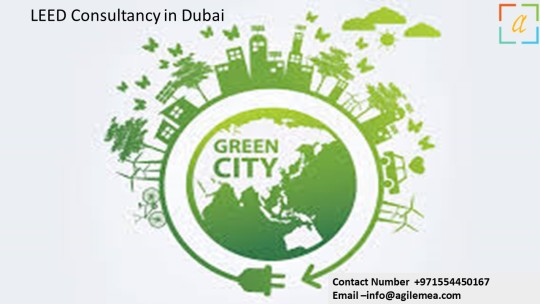
We as an LEED Consultancy in UAE, reducing energy and water expenses can result in savings of up to 40%, which has a favorable influence on operating costs. Even though LEED constructions have numerous advantages, sustainability eventually impacts the neighborhood. LEED projects generate excellent publicity, develop strong relationships with community members, and support a flourishing environment. To take advantage of the benefits, people are flocking to LEED developments. Tenant space and LEED communities are becoming more popular, driving up demand and rent for both. LEED-certified buildings have demonstrated a higher average rent and a lower vacancy rate (4 percent lower than non-green properties) when compared to non-green properties, demonstrating the excellent demand for LEED buildings. Not only are LEED buildings in great demand but millennial workers are also drawn to them.
In our role as LEED Certification in Dubai, the younger generation is becoming more conscious of the environment, so they are focusing on sustainability while choosing their next business move. Because of this, many companies and organizations are now exclusively renting space in LEED-certified buildings to recruit younger talent and improve their reputation. LEED-certified buildings provide cleaner indoor environmental quality, enhancing occupant health. According to a study, employee productivity and health are also improved in LEED-certified tenant spaces; workers in these areas have a labor productivity rate that is 16 percent greater than in non-green facilities. Buildings can be retrofitted with water-efficient fixtures to reduce greenhouse gas emissions by about 80,000 tons, improving interior and outdoor air quality. It should come as no surprise that many LEED-certified buildings are in the center of Colorado, with more than 15.6 billion square feet of LEED-certified building space worldwide.
We believe as a LEED Certification in UAE; The Denver International Airport (DIA) Hotel and Transit Center is a LEED-certified building situated on the outskirts of Denver. DIA aimed to save costs and resources while promoting sustainable energy that has a beneficial effect on residents. Sustainability is quickly rising to the top of organizational objectives, as evidenced by the many LEED-certified buildings that dot the globe. DIA was keen to capitalize on this trend. Every developer wants to make a difference in the community and the environment. LEED is the global benchmark for environmentally friendly construction and is gaining recognition worldwide. Considering that sustainability is quickly rising to the top of the international options, a developer would want to obtain LEED certification. LEED is a wise choice for every kind of development, and the advantages are increasingly showing themselves.
0 notes
Text
Benefits of Earning a LEED Certification
As an LEED Consultancy, we examined the essential procedures for achieving LEED certification for college campuses, the organizations that can help with the process, and tactics for encouraging LEED certification within the school community to support the quest for LEED certification. One indicator of a campus's commitment to environmental sustainability is its LEED accreditation. Colleges may lessen their environmental impact and support international efforts to tackle climate change using energy-efficient designs, sustainable materials, and water conservation techniques. College campuses can save money on utility bills and operating expenses by choosing LEED-certified buildings that maximize energy and water efficiency. Buildings with LEED certification emphasize indoor environmental quality, which enhances occupant health and well-being.
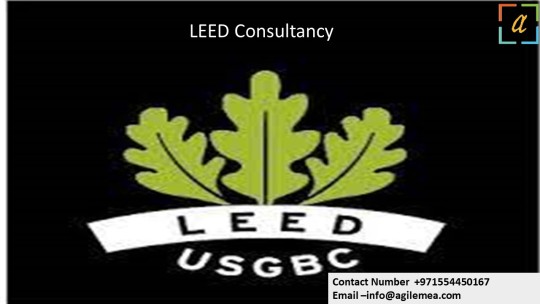
In our opinion as LEED Consultant, Higher education institutions can foster healthier learning and working environments for their teachers, staff, and students by implementing non-toxic construction materials, streamlining ventilation systems, and harnessing optimal natural sunshine. A college or university's marketability and reputation are improved by having LEED certification. Colleges may attract potential students, professors, and benefactors who support green initiatives by showcasing their dedication to sustainability and environmental responsibility. A campus with buildings certified by LEED distinguishes itself as an innovation and sustainable development pioneer. Before starting a project for which, you plan to apply for LEED certification, consider your team's resources. Beginning with the USGBC, several resources are available for advice, information, and a deeper comprehension of the certification procedure.
We believe as a LEED Certification in Dubai, The USGBC, the foremost authority on green building certification, offers information, training, and accreditation to professionals pursuing LEED certification. Colleges can benefit from the USGBC's knowledge and direction during accreditation. Meanwhile, the Green Building Certification Institute (GBCI) is in charge of awarding credentials to experts in the green building sector and managing the LEED certification process. Colleges can handle the certification process and guarantee compliance with LEED regulations by working with GBCI-accredited specialists. You might also run a sustainability-focused organization or have a campus office. Offering knowledge, resources, and assistance to encourage sustainable development on campus and enable LEED certification projects will aid in promoting LEED certification activities.
Being an LEED Certification in UAE, many universities have realized the benefits of encouraging LEED certification within their communities to boost the projects' momentum and get support from the staff, faculty, and students. Education and awareness initiatives can raise awareness of the value of LEED certification and its advantages for the campus community. Events, including workshops, lectures, and campus tours, may be held to emphasize the sustainable aspects of LEED-certified buildings. It also promotes a sense of ownership and community involvement when students are involved in LEED certification efforts. To encourage LEED certification and develop future sustainability leaders, colleges can involve students in sustainability projects, green building design competitions, and campus greening activities.
0 notes
Text
How does the LEED rating system operate?
As an LEED Certification in UAE, Buildings can gain points for fulfilling requirements in interior environmental quality, water conservation, and energy efficiency. A building's LEED rating increases with the number of points it receives. Green Business Certification Inc. conducts a thorough evaluation procedure for buildings to certify them as LEED-certified. This process consists of three reviews: pre-certification, construction, and post-construction. The building also needs to score specific points and fulfill a set of minimal conditions in each category. The LEED rating system strongly emphasizes renewable energy and energy efficiency. When a building uses energy-efficient devices and systems, such as solar panels, LED lighting, high-efficiency HVAC systems, and data analytics platforms, it might receive points. Using renewable energy sources, such as hydroelectric, wind, or geothermal electricity, can also earn points. When a project achieves over 50% of the possible points and attains the silver certification level, it exceeds the fundamental LEED requirements.
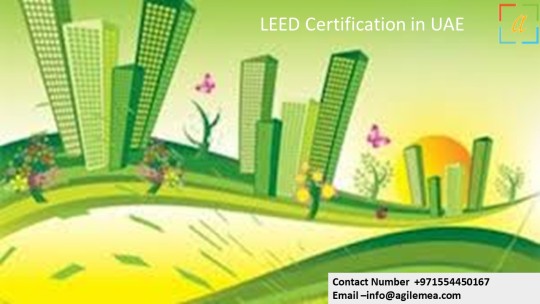
Being an LEED Certification in Dubai, another crucial component of the LEED grading system is water conservation. Buildings that use greywater and rainwater harvesting systems and water-efficient fixtures and appliances like low-flow toilets and showerheads can accrue points. An additional essential component of the LEED certification system is indoor environmental quality. It can gain points when a building offers the best possible natural light, thermal comfort, and indoor air quality. Incorporating environmentally friendly cleaning and pest control techniques and granting access to green areas are other ways they can earn points. Building owners and developers find LEED certification crucial as more businesses strive to satisfy the growing demand for green buildings and lessen their environmental effects. Getting LEED certified can also help a building become more valuable, marketable, and appealing to high-caliber investors.
In our opinion as LEED Consultancy in Dubai, there are four levels in the LEED certification process, each of which denotes a higher level of environmental responsibility and sustainability. These designations, which stand for increasing performance in green building techniques, are Certified Silver, Gold, and Platinum. Achieving Certified status indicates that a building project has met the LEED certification's baseline requirements, earning at least 40% of the total potential points. This level exhibits a fundamental dedication to sustainability, covering essential techniques in material selection, water saving, and energy efficiency. It acknowledges the project's preliminary efforts to reduce its environmental impact. This level incorporates advanced sustainable practices above and above the core benchmarks, demonstrating a considerable commitment to environmental stewardship.
We are renowned LEED Consultancy in UAE, Projects of this category frequently incorporate improved energy management systems, water efficiency measures, and sustainable building materials, all of which contribute to a lower carbon footprint and better indoor environmental quality. Securing over 60% of the LEED points, a building with gold certification has demonstrated excellence in sustainable design and operation. Among other environmental accomplishments, gold-certified buildings stand out for their creative water and energy conservation approaches and improved indoor air quality. These structures are excellent examples of sustainable architecture, demonstrating how careful planning and execution can significantly reduce their adverse environmental effects.
0 notes